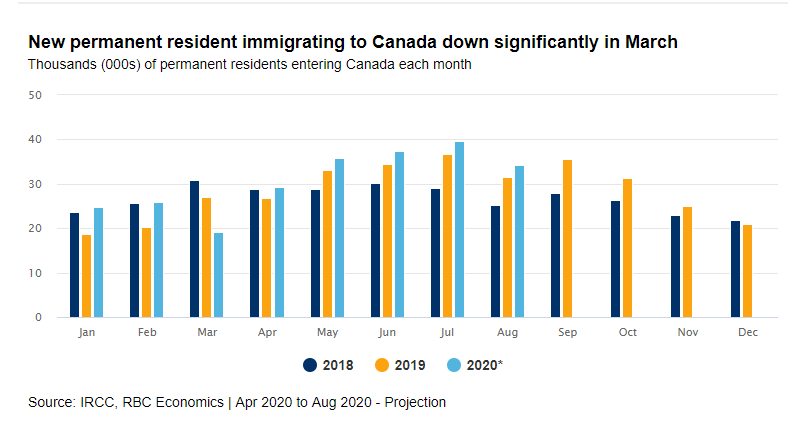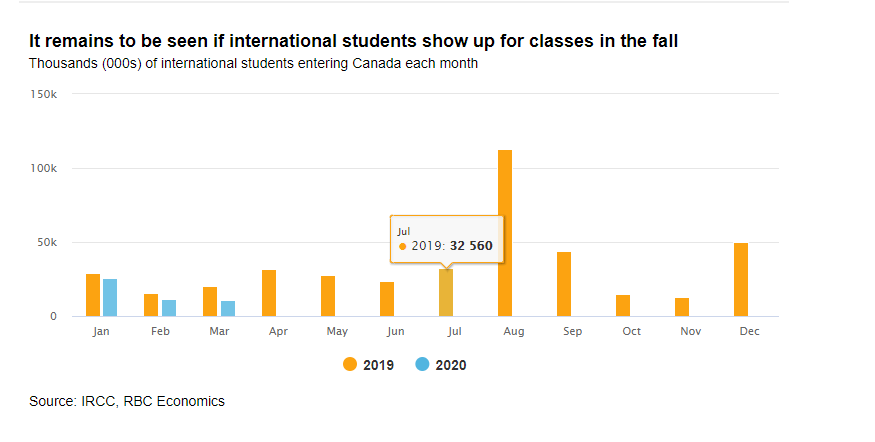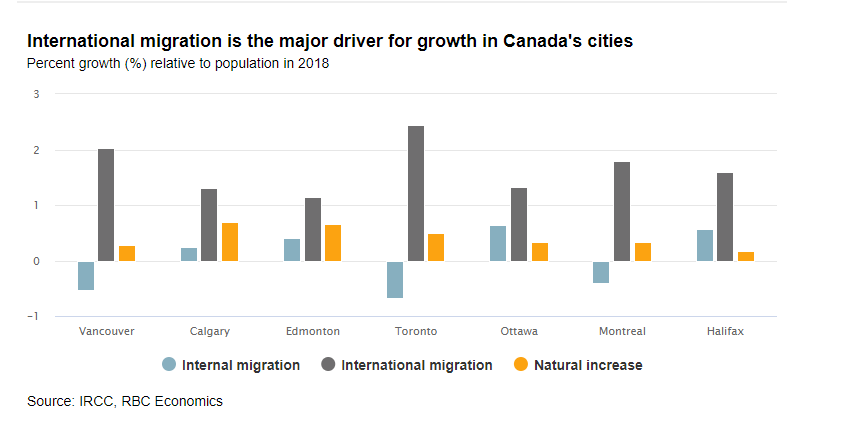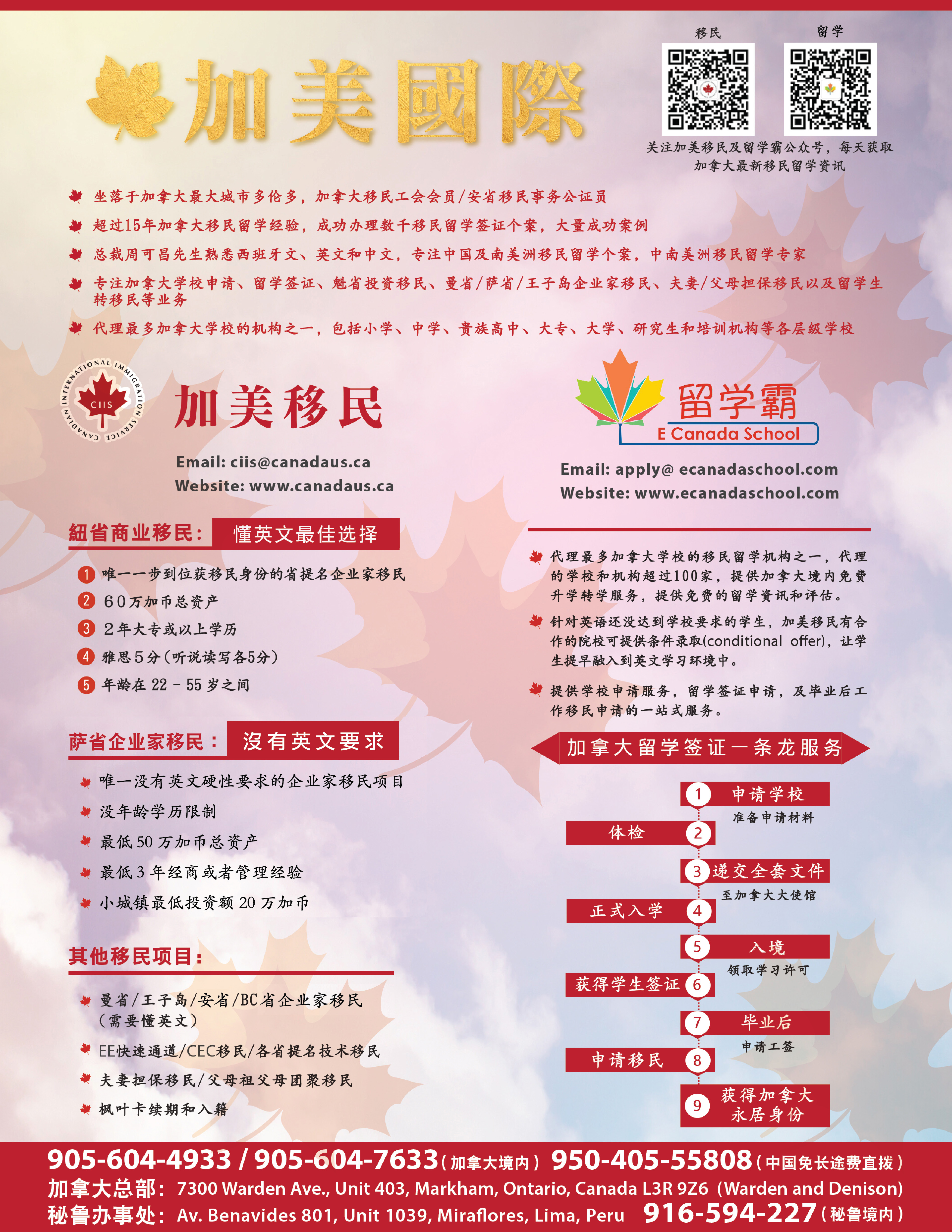Scan



According to the latest research report published by RBC, the epidemic temporarily hit the growth target of new immigrants in Canada. The report said that Canada has always been one of the most important immigration destinations in the world, and this year is no exception. On March 12, Ottawa released a plan to require the addition of 370,000 permanent residents by 2020, a figure that will exceed the record 341,000 new immigrants in 2019. Four days later, due to concerns about the spread of COVID-19, Canada imposed travel restrictions. In the context of continued border restrictions, travel-related health concerns, and the global economic recession, the research team expects the number of immigrants to decline sharply by 2020. The recovery in 2021 will depend in part on the development of the epidemic.

The disruption will reverberate across the economy, given our reliance on immigration for labour-force growth and to offset Canada’s aging demographic. Among the potential casualties: industries with labour shortages, urban rental and housing markets, and university budgets. Canada will need a younger and growing population to maintain growth and support the unprecedented expansion of the fiscal deficit that came in response to the crisis.
Key Points:
Permanent resident additions were down 30% in March versus a year earlier
Temporary foreign worker entries in the agricultural sector fell 45% in March from a year earlier
The number of students entering on study visas fell 45% in March from a year earlier
The net loss of new permanent residents this year could total up to 170,000
From healthy growth to sudden stop
Travel restrictions and border closures cut off the flow of newcomers into Canada in mid-March. Only those whose permanent residency or study permits had been approved before March 18 are allowed to enter Canada, and in March permanent-resident additions were 30% below last year’s level.
If these restrictions last all summer, we expect to see 170,000 fewer permanent residents entering the country in 2020 than planned—all in a year in which Canada was supposed to welcome a record number of newcomers.
New permanent resident immigrating to Canada down significantly in March

While temporary foreign workers are exempt from entry restrictions, fewer are coming. The overall number of TFWs entering Canada in March was down 35% versus the same month last year. In the agriculture sector—where they represent a key source of labour—the drop was an even sharper 45%, mainly to due big declines from the key source countries of Mexico, Guatemala and Jamaica. One possible explanation: TFWs are required to isolate in Canada for 14 days before starting to work—making the economic calculus for these workers that much more difficult. While Canada is offering $1,500 per worker to help buffer these costs, similar quarantines may exist in their home countries, limiting their ability to work once they get home. Ontario, Quebec, and British Columbia are especially at risk of TFW shortages in agriculture.

Refugee resettlement—which delivered around 150,000 newcomers to Canada in the last five years and has been a key source of pride for the federal Liberals—has stopped entirely.
There were also 45% fewer students entering on study visas in March, and fall enrolments are likely to be down sharply amid travel restrictions and a broad, possibly permanent shift to remote learning.

In 2019, Canada’s population grew by about 580,000 people (or 1.6%), with immigrants accounting for more than 80% of the increase. While more than 30% of the overall population is at least 55, only 8% of immigrants are. Indeed, almost two-thirds of immigrants are in the prime working ages between 25 and 54. Without immigration over the past 15 years, Canada would have aged on a similar trajectory as 1990s Japan. Instead, Canada is one of the younger countries in the G7.
Nearly all of Canada’s largest cities have seen GDP grow faster than the national average, reflecting their large immigrant populations. In fact, with closed borders, Toronto, Vancouver and Montreal would all have seen declines in population in 2019, as Canadian-born millennials fled for more affordable outlying areas. A slowdown in immigrant-related demand for homes could squeeze the rental and housing markets.


